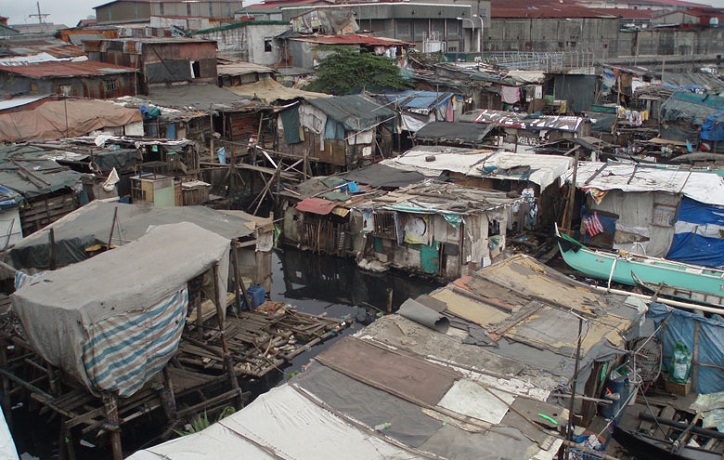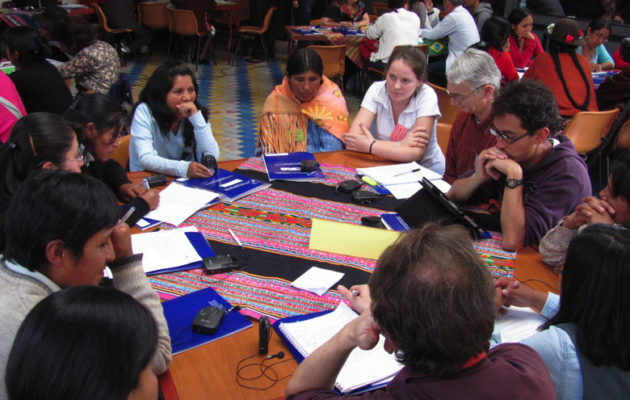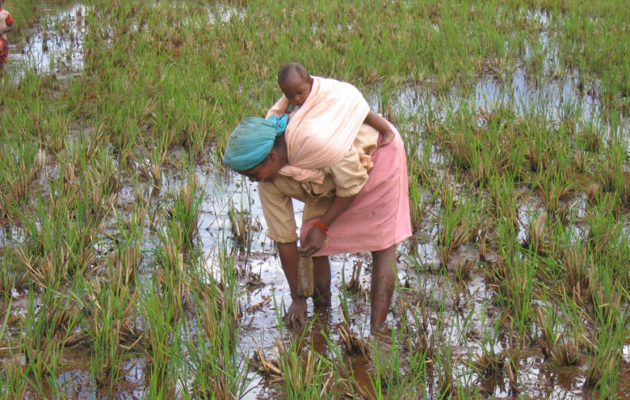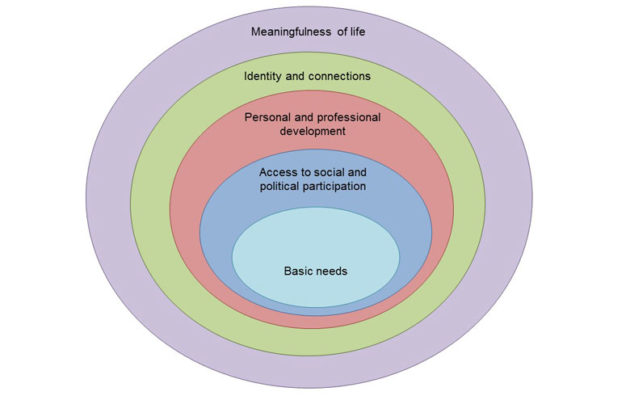Redefining Poverty: New Report Looks at Subjective Elements as Key to Understanding Poverty

Above: Manila, Philippines.
By Carolina Rivera and Monica Jahangir
Carolina Rivera is a Research Analyst at the Human Development Report Office at UNDP. Monica Jahangir is a Policy and Advocacy Officer at the International Movement ATD Fourth World.
Many dimensions of poverty
Poverty has many dimensions beyond a lack of money. The need for a better understanding of the multiple ways people experience poverty is gaining momentum. As is the importance of measuring the often – overlapping deprivations people face. Understanding both is vital for better decision making. This has obvious parallels with human development, a full understanding of which requires considering many dimensions of life, ranging from health, education and income through voice and empowerment.
The United Nations Development Programme (UNDP) has been a pioneer in redefining poverty by developing broader measures of poverty such as the Multidimensional Poverty Index (MPI) that seeks to widen the poverty debate. But while work on measuring poverty is now going beyond simple income-based measures, it typically focuses on, what is referred to, as the “objective aspects of poverty”. That is, it focuses on a set of tangible goods and services, without which people might be defined as poor. Yet, poverty also has a subjective side: people can also be thought of as poor because of how they feel about important aspects of their lives – dimensions that they value (opens pdf file).
Many subjective elements
Many now recognize the importance of considering measures of subjective well-being – most famously happiness or life satisfaction – when assessing a society’s development. This is also the case with poverty, which has many subjective elements as well. Poverty can affect human beings in different ways. For example, either internally (shame, humiliation for example) or externally (lack of political power and voice). Within this framework and against the backdrop of the 2030 Agenda for Sustainable Development, which calls for “ending poverty in all its forms everywhere”, the International Movement ATD Fourth World and the University of Oxford are leading a conversation to redefine poverty by re-examining its key dimensions and how they interact with each other through their “Poverty in All its Forms: Determining the dimensions of poverty and how to measure them” project.

Merging of Knowledge
Based on the Merging of Knowledge methodology, this project is a programme of international research bringing academics and practitioners together with people, who have a direct experience of poverty, as co-researchers, putting them on an equal footing. The research starts with a peer group discussion. Where people with similar backgrounds meet to discuss their experiences, knowledge and perceptions of poverty. The different peer groups then meet to share their findings. Then they work to expand their definitions of poverty. National teams, which include academics, practitioners and people with direct experience of living in poverty, are undertaking research in Bangladesh, Bolivia, France, Tanzania, the United Kingdom and the United States. Their findings will be consolidated at a national level. After it will be brought together internationally to identify dimensions of poverty common to the South and the North.
Ranking exercise: Using the image of a stone’s ripple effect in a pond, the group prioritized their dimensions of poverty from the most (center) to the least (outskirt) impactful in people’s lives.
Recognizing the importance of this work, the Human Development Report Office (HDRO) participated in one of the peer groups, sharing its experience in defining and measuring multidimensional poverty through the human development approach with its focus on people as well as their opportunities and choices. Human development is about giving people more freedom to lead lives they value. And that was precisely one of the starting questions: participants asked themselves – what were the aspects of their lives they valued the most. Participatory research like this can challenge traditional concepts. By thus giving a voice to people living in poverty who are arguably the greatest experts on what it is really like to be poor. The findings can redefine the way as to how public policy worldwide targets poverty eradication.

Redefining Poverty
Many participants in the program followed a traditional approach and placed basic needs at the center of their poverty hierarchy. They felt that only by meeting basic needs would human beings be able to participate in society and political life, develop professionally, connect with others, and find purpose in life. Others had a different view. They felt the most important dimension of poverty was how individuals are perceived and whether their dignity and identity are denied. If one looks at poverty in this way. We can view the other dimensions as consequences of the (lack of) respect to their human rights.
Defining non-traditional poverty can support monitoring of both poverty and the Sustainable Development Goals (SDGs). Thus allowing countries to design innovative solutions for tackling poverty in areas that are not traditional. Areas often neglected. In part because of the difficulty of measuring some concepts. Such as identity and self-awareness, social connections, and a sense of belonging. We hope this work will raise the importance of such measures. With a claim for their includsion in statistical data collections everywhere.
Note: A full report presenting the nine dimensions of poverty in the United States will be available March 27, 2019 on ATD Fourth World USA’s website. An international synthesis report will be presented at a joint OECD – ATD Fourth World conference in Paris on 10 May, 2019.
Originally published on November 6th, 2018 as a HDialogue at http://hdr.undp.org/en/content/measuring-multidimensional-poverty-leaving-no-one-behind.


